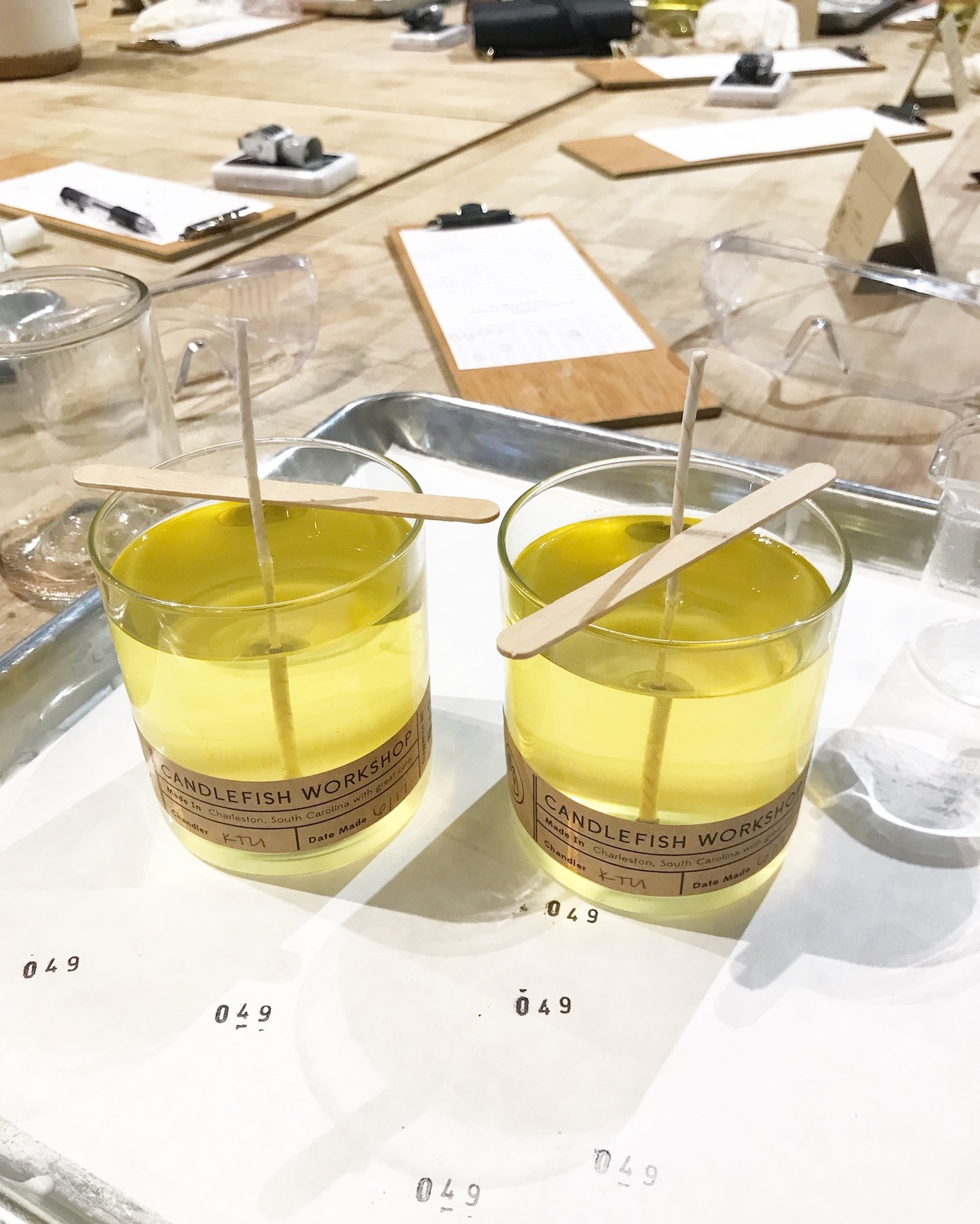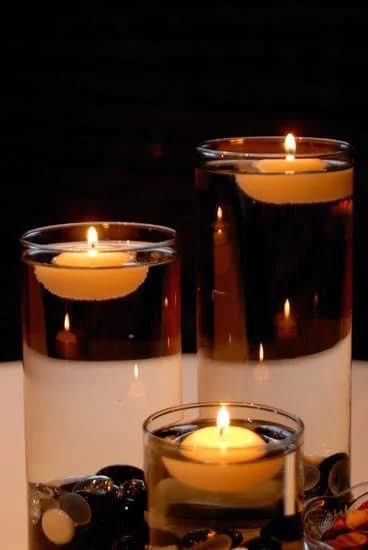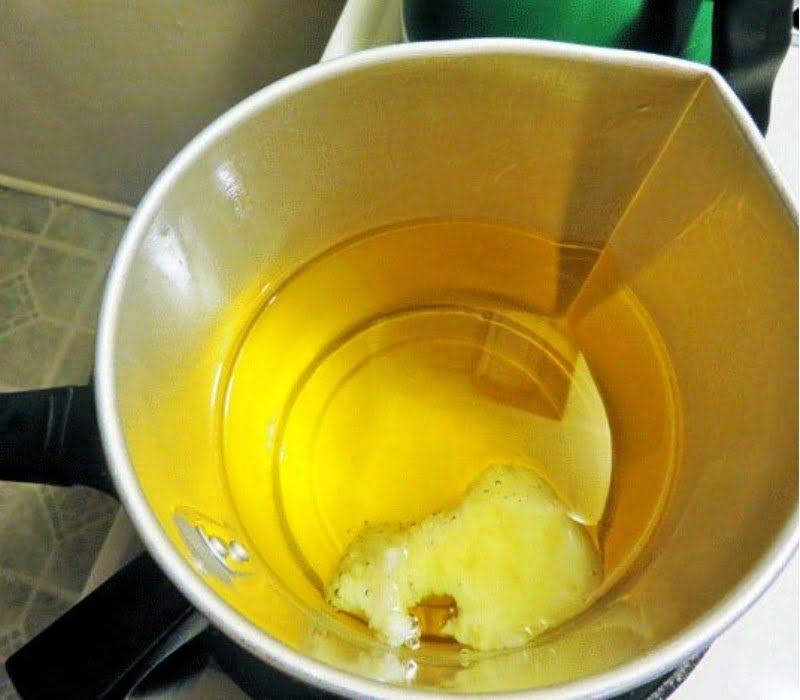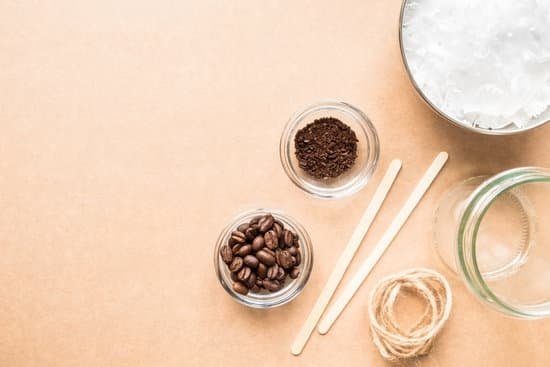Candle making has long been a beloved hobby for creative individuals looking to add warmth and ambiance to their homes. With the rise in popularity of natural and environmentally-friendly products, many candle makers are turning to essential oils as a way to enhance not only the fragrance of their creations, but also the overall sensory experience.
In this article, we will delve into the world of candle making and explore the best oils to use for creating beautiful and aromatic candles.
When it comes to candle making, choosing the right oils is crucial in achieving the desired scent and effect. Essential oils, derived from plants through distillation or other extraction methods, offer a wide variety of aromas that can transform a simple wax candle into an olfactory delight. With so many options available, it’s important to understand the characteristics of different essential oils and how they can contribute to your candles’ overall appeal.
In this exploration of essential oils for candle making, we will focus on three popular choices: lavender, vanilla, and eucalyptus. These oils not only provide pleasant scents but also offer unique benefits when incorporated into candles. Whether you’re looking for a calming ambiance, an alluring atmosphere, or an invigorating mood enhancer, these essential oils can bring your candles to life in ways that synthetic fragrances simply cannot achieve.
Join us as we dive deeper into each of these essential oils and discover how their scents and properties can enhance your candle-making journey. From understanding their individual characteristics to exploring how they can be blended together for captivating combinations, this article will guide you in creating candles that not only look beautiful but also fill your space with exquisite aromas. Get ready to embark on a fragrant adventure where creativity meets relaxation and inspiration is ignited by scent.
Understanding the Importance of Choosing the Right Oils for Candle Making
Choosing the right oils for candle making is essential to creating high-quality, fragrant candles. The type of oil you use will not only determine the scent of the candle but also affect its burn time and overall performance. Understanding the importance of choosing the right oils is crucial for any candle maker.
One of the main reasons why selecting the correct oils is important is because different oils have varying flashpoints. The flashpoint refers to the temperature at which an oil will ignite when exposed to an open flame. It is crucial to choose oils with a higher flashpoint to ensure safety during burning.
For example, essential oils such as lavender and eucalyptus have relatively low flashpoints, making them unsuitable for candle making on their own. However, they can be safely used when combined with other oils or synthetic fragrances that have a higher flashpoint.
Another significant factor to consider when choosing oils for candle making is scent strength. Some essential oils are highly concentrated and may be overwhelming if used in large quantities, while others may have a milder scent and require more oil to achieve a desired fragrance level in your candles. It’s important to take into account the intensity of each oil’s aroma and how it will blend with other scents you plan to use.
Safety measures should also be taken into consideration when selecting oils for candle making. Certain essential oils may cause skin irritations or allergic reactions if not properly diluted or handled correctly. It is vital to carefully research each oil’s safety guidelines and follow recommended dilution ratios provided by reputable sources. Additionally, always handle hot wax and essential oils with caution and keep them out of reach from children and pets.
Exploring the Top Essential Oils Ideal for Candle Making
When it comes to candle making, choosing the right essential oils is crucial in creating a delightful aromatic experience. Among the vast array of options available, three essential oils stand out as popular choices for candle making: lavender, vanilla, and eucalyptus. Each of these oils offers unique qualities that can enhance your candles and create a captivating atmosphere.
- Lavender: Known for its calming and soothing properties, lavender essential oil is a staple in candle making. Its delicate floral scent promotes relaxation and helps to relieve stress and anxiety. When used in candles, lavender creates a serene ambiance that can be perfect for winding down after a long day or setting the mood for a peaceful evening. Combining lavender with other floral scents like chamomile or rose can create an even more luxurious scent profile.
- Vanilla: The rich and sweet aroma of vanilla is an alluring choice that adds warmth and coziness to any space. Vanilla essential oil has a comforting effect on the mind and body and can help promote relaxation. It pairs well with other sweet scents like cinnamon or citrus fruits to create a warm and inviting atmosphere. Vanilla-scented candles are also often used to add a touch of sweetness to special occasions or holiday celebrations.
- Eucalyptus: If you’re looking for an invigorating fragrance that can uplift your spirits, eucalyptus essential oil is an excellent choice. With its refreshing and minty scent, eucalyptus can help clear your mind and reduce mental fatigue. It also has purifying properties that can cleanse the air in your surroundings when used in candles. Combining eucalyptus with other energizing scents like peppermint or lemon can create an aroma that revitalizes your space.
By using these top essential oils in your candle making, you can create unique and captivating scents that enhance the mood and ambiance of any space. Whether you want a calming atmosphere with lavender, a cozy environment with vanilla, or an invigorating experience with eucalyptus, these essential oils are sure to elevate your candle creations. Experimenting with different combinations and ratios of these oils can help you find the perfect scent profile that suits your preferences and creative vision.
Unleashing the Calming Aromas of Lavender in Your Candle Making
Lavender is one of the most popular essential oils used in candle making due to its calming and soothing effects. Not only does it impart a fragrant and delightful aroma, but lavender also offers various benefits for relaxation, stress relief, and promoting better sleep. When used in candles, the scent of lavender can create a serene and tranquil atmosphere, making it perfect for creating a peaceful ambiance at home or in spa settings.
The use of lavender essential oil in candle making dates back centuries. Its timeless scent has been favored for its ability to calm the mind and body, reducing anxiety and promoting better sleep. The delicate floral notes of lavender can transform any space into a haven of tranquility.
To incorporate lavender into your candle making process, there are several options available. You can choose to use pure lavender essential oil or opt for fragrance oils that are inspired by the natural scent of lavender. Fragrance oils offer consistency in scent without compromising on quality, making them a popular choice among candle makers.
When selecting lavender essential oil or fragrance oil for your candles, it is important to consider factors such as purity, potency, and compatibility with wax types. Certain waxes may not blend well with certain oils, so it is advisable to conduct small-scale experiments before committing to larger batches.
| Factor | Considerations |
|---|---|
| Purity | Look for high-quality pure lavender essential oil or fragrance oil |
| Potency | Determine the desired strength of lavender scent in your candles |
| Compatibility with Wax Types | Ensure the lavender oil or fragrance oil blends well with the specific wax you are using |
| Dilution Ratio | Follow recommended guidelines for diluting the oil properly to achieve optimal scent throw in your candles |
By carefully considering these factors and experimenting with different ratios, you can create beautifully scented lavender candles that provide a sense of calm and relaxation. Whether used for personal enjoyment, gifts, or aromatherapy purposes, lavender-infused candles are a wonderful addition to any home.
Embrace the Alluring Scents of Vanilla
The Sweet and Soothing Scent of Vanilla
When it comes to candle making, vanilla is undoubtedly one of the most popular choices for scent. Its sweet and soothing aroma creates a comforting atmosphere that can help reduce stress and anxiety. The warm and familiar scent of vanilla has a way of evoking pleasant memories and creating a sense of relaxation.
Adding Depth to Your Candle Creations
In addition to its enticing fragrance, vanilla adds depth to your candles. It has a natural ability to enhance other scents, making it an excellent choice for blending with other essential oils. By combining vanilla with fragrances like lavender or cinnamon, you can create unique and captivating candle scents that will delight your senses.
Choosing the Right Type of Vanilla
When selecting vanilla oil for candle making, it’s important to consider the different types available. There are various forms of vanilla oil, including vanilla absolute and vanilla oleoresin. Each type has its own characteristics that can influence the final scent profile of your candles.
Vanilla absolute is derived through solvent extraction from the vanilla bean and has a more intense aroma than other forms. It is commonly used in perfumery but can also be added to candles for a rich and full-bodied scent.
On the other hand, vanilla oleoresin is a thick semi-solid substance obtained by solvent extraction or resin tapping. It contains both the volatile compounds as well as solid matter from the vanilla bean, giving it a more complex scent compared to other forms of vanilla oil.
Consider experimenting with different types of vanilla oils to find the one that best suits your desired fragrance profile.
With its enticing aroma and versatility in blending with other scents, vanilla is undoubtedly an excellent choice for candle making. Whether you’re aiming for a cozy ambiance or a more sophisticated atmosphere, incorporating the alluring scent of vanilla into your candles will undoubtedly elevate your candle-making experience.
Enhancing Your Candles with the Invigorating Fragrance of Eucalyptus
Eucalyptus is a popular essential oil choice for candle making due to its invigorating fragrance and various benefits. The distinctive scent of eucalyptus can uplift the atmosphere, promote relaxation, and provide a refreshing ambiance to any space. In this section, we will explore why eucalyptus is an ideal choice for candle making and how it can enhance your candles.
Eucalyptus essential oil is derived from the leaves of the eucalyptus tree through a steam distillation process. It has a strong, fresh, and minty aroma with hints of citrus. This unique scent makes it a fantastic addition to any candle blend or standalone scent. When used in candles, eucalyptus can create an inviting and spa-like environment that promotes calmness and mental clarity.
Not only does eucalyptus offer pleasant aromas, but it also possesses various therapeutic properties. It is known for its ability to ease respiratory issues, relieve muscle tension, and help alleviate stress. By incorporating eucalyptus essential oil into your candles, you can benefit from these therapeutic effects while enjoying the soothing ambiance it creates.
To make the most of the invigorating fragrance of eucalyptus in your candles, it is important to select high-quality essential oils from reputable sources. Look for oils that are pure, undiluted, and free from additives or synthetic fragrances. Additionally, consider the flashpoint of the oil when determining suitable usage in candles.
| Properties | Benefits |
|---|---|
| Aroma | Strong, fresh, minty with hints of citrus |
| Therapeutic Properties | Eases respiratory issues, relieves muscle tension, helps alleviate stress |
| Safety Considerations | Choose high-quality oils, consider flashpoint for candle usage, ensure proper dilution |
Beyond the Basics
When it comes to candle making, the possibilities are endless. One way to create unique and captivating candle scents is by mixing essential oils. By combining different oils, you can create your own signature fragrance that is truly one-of-a-kind. Here are some tips and ideas for mixing essential oils for your candles.
Understanding Oil Compatibilities
Not all essential oils work well together, so it’s important to understand which oils are compatible and complementary. Some oils have similar scent profiles and will blend harmoniously, while others may clash or overpower each other. Experimentation is key when it comes to blending oils, but it’s always a good idea to start with small batches and test the scent before committing to a larger batch of candles.
Creating Balanced Blends
When mixing essential oils for candle making, it’s important to create balanced blends that have a pleasing aroma. Start by selecting a few base notes, middle notes, and top notes. Base notes are rich and long-lasting scents like patchouli or sandalwood, while middle notes provide depth and balance such as lavender or rosemary. Top notes are lighter and more volatile scents like lemon or peppermint that add freshness and spark.
For example, you could try blending lavender (middle note), vanilla (base note), and eucalyptus (top note) for an intriguing floral-citrus fragrance. The key is to experiment with different combinations until you find the perfect balance that appeals to you.
Layering Fragrances
Another approach to mixing essential oils for candles is layering fragrances. This involves adding multiple layers of scents to create complexity in the aroma profile of your candles. To do this, start by selecting two or three complementary scents with varying intensities.
Begin by adding the base note oil, then layer on the middle note oil followed by the top note oil. This layering technique allows each scent to shine through at different stages of burning, giving your candles a multi-dimensional fragrance experience.
Important Factors to Consider when Selecting Oils for Candle Making
When it comes to selecting oils for candle making, there are several important factors that should be considered. These factors include the flashpoint of the oil, the scent strength it provides, and the necessary safety measures.
The flashpoint of an oil refers to the temperature at which it can ignite when exposed to an open flame. Different oils have different flashpoints, and it is crucial to choose oils with a high enough flashpoint to ensure safety during the candle-making process.
Oils with a low flashpoint can pose a fire hazard and should be avoided in order to prevent accidents. Generally, essential oils have lower flashpoints compared to synthetic fragrance oils, so it is important to be mindful of this when selecting oils for your candles.
Scent strength is another important factor to consider when choosing oils for candle making. Some oils have a strong scent that can easily fill a room, while others have a more subtle aroma. The scent strength will determine how well the fragrance is dispersed when the candle is burning.
It is important to select oils with an appropriate scent strength based on personal preference and the desired effect of the candle. For instance, if you want a more relaxing ambiance, you may opt for oils with a softer scent.
Safety measures must also be taken into consideration when selecting oils for candle making. It is essential to ensure that all chosen oils are safe for use in candles and will not cause any harm or adverse reactions when burned. Researching each oil’s potential risks and taking necessary precautions will help ensure your candles are both safe and enjoyable to burn.
By considering these important factors of flashpoint, scent strength, and safety measures, you can confidently select the best essential oils or fragrance oils for your candle making projects. Taking these factors into account will help you create beautiful, aromatic candles that are not only pleasing to the senses but also safe for use.
Making the Most of Your Scents
When it comes to making candles, one of the most important aspects is achieving the perfect scent. Proper dilution and usage of essential oils are crucial in creating candles with a balanced and appealing aroma. Here are some tips on how to make the most of your scents during the candle-making process.
Firstly, it is essential to dilute your essential oils properly. Undiluted oils can be overpowering and may not blend well with the wax. The general rule of thumb is to add 1 ounce of essential oil to every pound of wax. However, this can vary depending on the strength of the oil and personal preference. It is always a good idea to start with less oil and gradually increase if needed.
Another important factor to consider is the flashpoint of the essential oils. Flashpoint refers to the temperature at which an oil starts to produce flammable vapors. It is crucial to choose oils with a high enough flashpoint for candle making, as it ensures that they will not evaporate or lose their scent during the melting and pouring process.
In terms of usage, it is recommended to add essential oils during the cooling phase of candle making, right before pouring them into molds or containers. This allows for better scent retention as adding oils during higher temperatures can cause them to break down and lose their aromatic properties.
Furthermore, proper stirring or blending techniques are necessary to ensure that the oils are evenly distributed throughout the melted wax. Gentle stirring or swirling motions are recommended rather than aggressive mixing, as this could lead to air bubbles forming in the final product.
Final Thoughts
In conclusion, choosing the right combination of essential oils for your candle making journey is a key factor in creating unique and captivating scents. Lavender, vanilla, and eucalyptus are all excellent choices that bring their own distinct aromas to your candles. Whether you want a calming and soothing scent with lavender, a sweet and comforting scent with vanilla, or an invigorating and refreshing scent with eucalyptus, these essential oils can transform your candles into true sensory experiences.
When it comes to creating your own signature fragrances, don’t be afraid to think beyond the basics. Experimenting with different combinations of essential oils can lead to incredible results.
Mixing lavender and vanilla can create a relaxing blend perfect for setting the mood for relaxation or bedtime. Combining eucalyptus with other citrus oils like lemon or orange can produce a refreshing and energizing aroma that’s perfect for boosting productivity or simply adding a touch of freshness to any space.
As you explore the world of candle making, it is important to consider factors such as flashpoint, scent strength, and safety measures when selecting your oils. Understanding these factors will ensure that you create candles that not only smell great but also burn safely. It is also important to properly dilute and use your oils in order to achieve the desired scent intensity without overpowering or compromising the quality of your candles.
Frequently Asked Questions
What kind of oils do you use for candle making?
When it comes to candle making, there are several types of oils that can be used. One common choice is fragrance oils, which are specifically formulated to provide a strong and long-lasting scent in candles. Another option is essential oils, which are derived from natural sources such as plants and flowers.
Essential oils can add a unique and aromatic touch to candles, but it’s important to note that they may not have the same strength of scent as fragrance oils. Additionally, some candle makers use carrier oils like coconut oil or soybean oil as a base for their candles, which can help with the overall texture and burning quality.
Which fragrance oil is best for candle making?
Determining the best fragrance oil for candle making depends on personal preference and desired outcomes. There is no one-size-fits-all answer to this question since fragrance preferences vary greatly from person to person. It’s crucial to select high-quality fragrance oils specifically made for candle making purposes as these typically have better scent throw and perform well in wax.
Some popular fragrance choices include floral scents like lavender or rose, fruity aromas such as citrus or berry blends, or warm and cozy options like vanilla or cinnamon fragrances. Ultimately, the best fragrance oil for candle making will be one that aligns with your desired scent profile.
What brand of oil is best for candle making?
Choosing the best brand of oil for candle making involves considering various factors such as quality, range of scents offered, customer reviews, and price point. The market offers numerous reputable brands known for producing excellent products suitable for candle making purposes. Brands like Yankee Candle offer a wide selection of both fragrance oils and essential oils renowned for their exceptional strength and longevity in candles.
Other established companies such as Nature’s Garden and Bramble Berry are also highly regarded by many candle makers due to their extensive range of high-quality oils designed specifically for candle crafting needs. Ultimately, the best brand of oil will depend on personal preferences regarding scent options, budget constraints, and individual experiences with different brands.

Welcome to my candle making blog! In this blog, I will be sharing my tips and tricks for making candles. I will also be sharing some of my favorite recipes.





